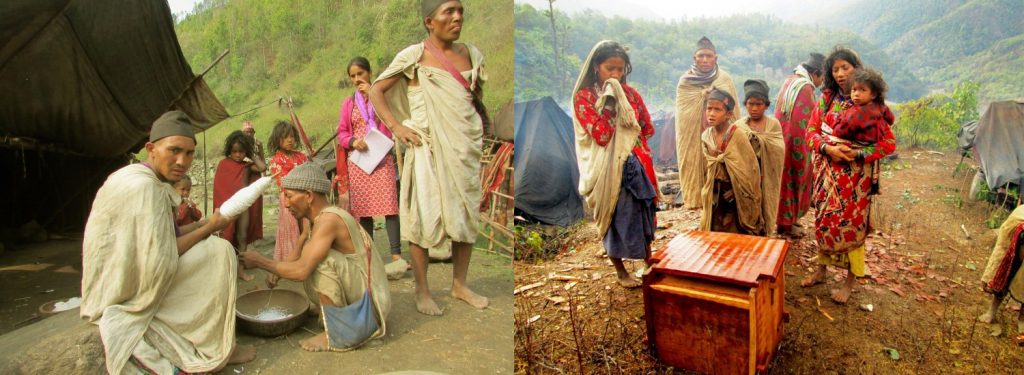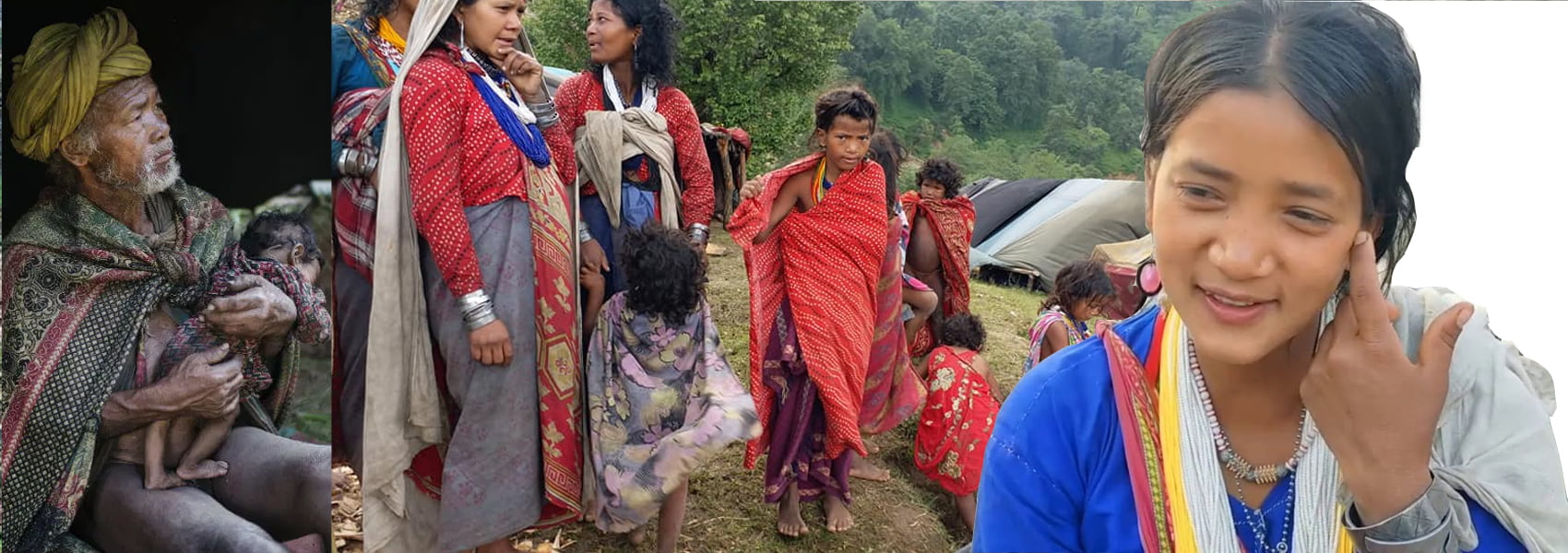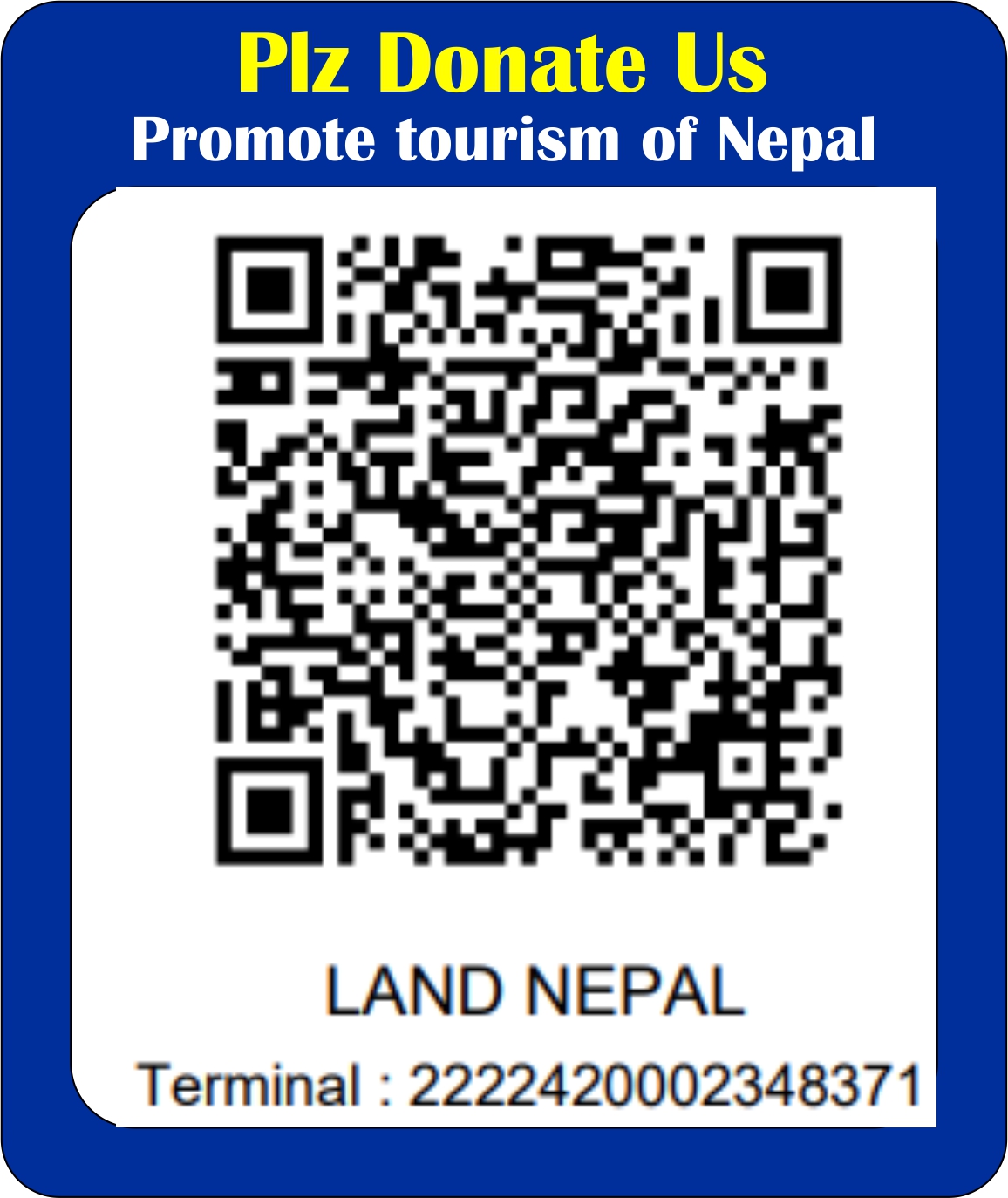The Raute in Nepal have always been nomadic hunters and gatherers. The government, however, forcefully relocated the nomadic Raute from Darchula District to the middle highlands of Dadeldhura in 1979. They were given land, but much of it was later taken away by wealthier landowners. Most of them returned to the forest after losing their land. Many Raute bands adopted new names and intermarried with adjacent tribes when their living arrangements and locations changed. The negative sentiments of many locals toward the Raute are a major impediment to integration. The Raute’s political landscape is large and complex. Currently, the government provides each Raute family member with 1,000 NRs each month in addition to the government-funded land and dwellings. There are no known Christians among the Raute. They follow a type of Animism as their religion.
The majority of Raute people live in the Dadeldura District in the far west. Raute people can also be found in the districts of Surkhet and Dang. The monolingual nomadic group’s estimated population fluctuates according on the source. This nomadic group moves across western Nepal, visiting several regions. Raute is a linguist with a lot of unknowns. Sino-Tibetan, Tibeto-Burman, Western Tibeto-Burman, Himalayan, Central Himalayan, Raute-Raji-Rawat, , however further study is needed to confirm these connections.
Education and agriculture: Their education and agriculture are still restricted, and Rautes continue to deny their involvement in agricultural activities. Sowing seeds is a sin for them. Agriculture and animal husbandry are forbidden in their culture. To survive, they receive food grains in exchange for their wooden goods. Other types of professions and occupations do not pique their attention. They believe that education is useless for them.
Food: They collect yam, roots, berries, and other foods from the forest. They do not fish, yet eating fish is not prohibited. The division of their work is based on sex. Cooking, washing utensils, fetching water from the stream, and beating the grains, for example, are primarily done by women. Carving wooden vessels, harvesting wood from the bush, selling the wood goods, trading for grains, and hunting monkeys are all jobs for men.

Monkey Hunting: They have mastered the art of monkey hunting and have developed a special net to catch monkeys. Hunting is done by a group of guys in the community working together. They are not interested in hunting birds or other animals, though.
Lineage and Marriage: They are endogamous and do not objectify lineage based on name, god, or inherited property. Although there is no polygamy, widower men are allowed to remarry. Widows, on the other hand, are not permitted to remarry. Inter-caste marriage and child marriage are severely forbidden.
Raute’s Gods: They worship natural elements such as the sun, rivers, and forests. Bhuyar, the hunting god, is worshipped by them. Women are not permitted to engage in religious rituals. Outsiders should not come into contact with Bhuyar.
Raute bury the body in a neighboring forest once a community member dies, and they move their camps swiftly to a new location. They chop down soft trees to carve wooden vessels and trade for grains with them. Because they relocate, there is always enough time for the trees to regrow. Rautes only drink water from natural springs. They won’t drink from a pond, a hand pump, or a well.Raute are endogamous. They are organized into a nuclear family. Following their marriage, the new couple relocates to a new tent to begin their married life together. After marriage, they will even abandon their bereaved mother and sister.
Moreover, the Raute people live a nomadic life. The cause of their nomadic lifestyle is based on a story that one of their family members died when they remained in one area for a long period. They began to believe that staying in one area for an extended period of time was a bad omen, and they never stayed in one place for long.Rautes are the people in Nepal who are going to nearly extinct and our Government should give proper emphasis on them to save their culture and tradition and beliefs as they are one of the assets of our country Nepal.
-Article written by: Saru Niraula for Land Nepal




